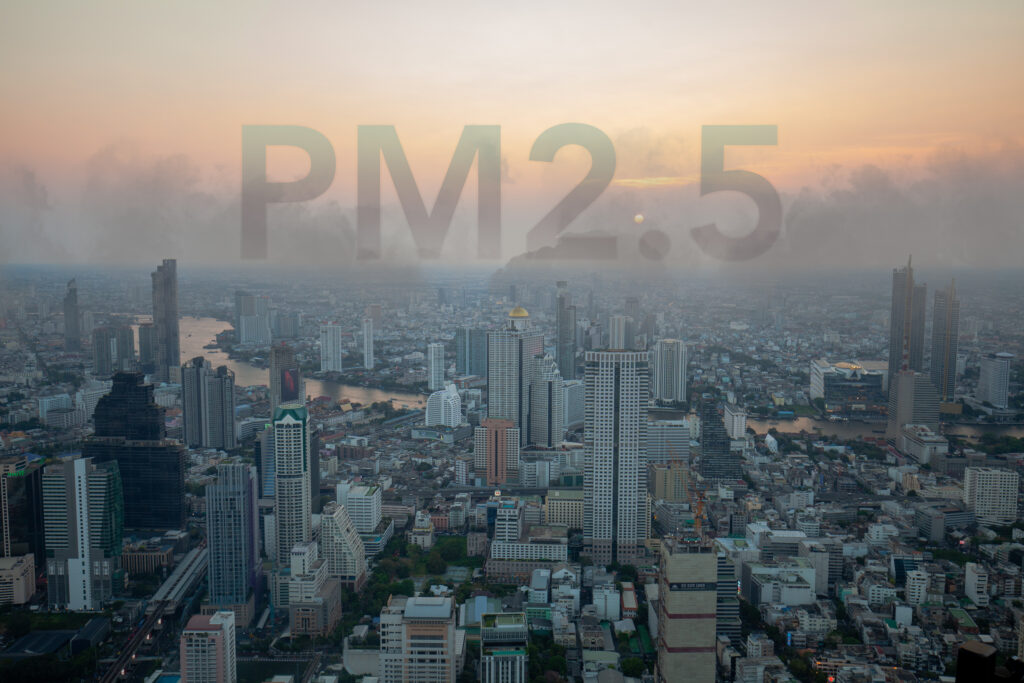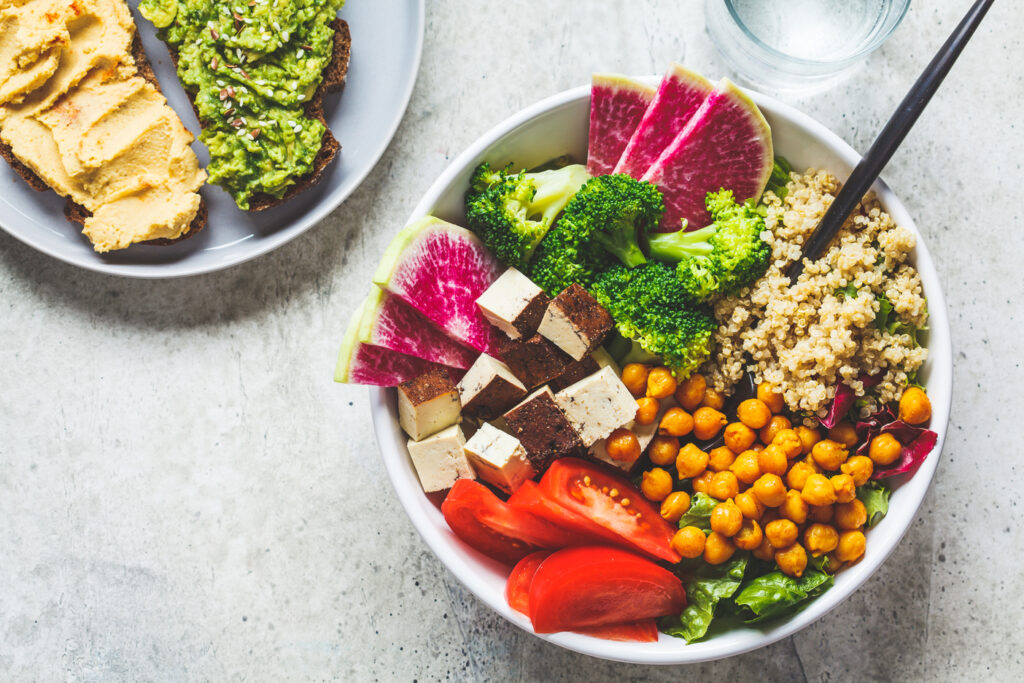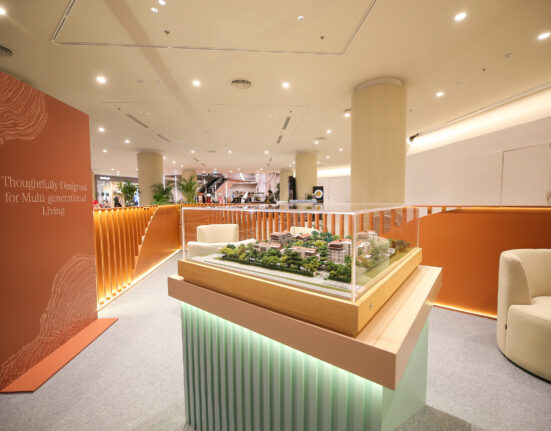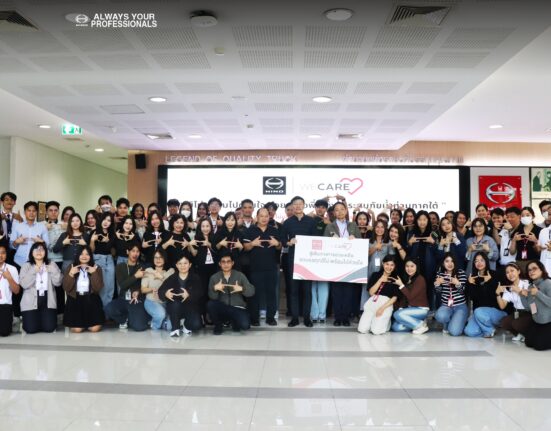5 High-Risk Groups Exposed to PM 2.5 Pollution: Accumulating Silent Threats
In recent years, Thailand has faced a serious environmental challenge: PM 2.5 pollution. This insidious threat significantly impacts public health, particularly respiratory systems, with no clear solution in sight.
Recently, residents of Ticy City had the opportunity to read an enlightening article from W9 Wellness Center about the dangers of PM 2.5 pollution. This fine particulate matter claims the lives of over 7 million people globally each year. Thailand ranks 5th in Asia and 36th worldwide, with an average PM 2.5 concentration of 23.3 micrograms per cubic meter—far exceeding the WHO’s recommended air quality standard of 4.7 micrograms.

According to WHO, PM 2.5 is classified as a carcinogen and is linked to respiratory diseases and non-communicable diseases (NCDs), especially affecting vulnerable groups like the elderly and those with pre-existing conditions. Dr. Pijak Wongvisit, Director of W9 Wellness Center, underscores the urgency of the situation. He emphasizes the importance of preventive health measures and suggests strategies to mitigate the impact of toxic pollutants. These strategies include boosting the body’s immune defenses and minimizing exposure to harmful substances.
Recent data from IQAir Global highlights the severity of the problem. PM 2.5 pollution has increased by over 20% in Southeast Asia since 2567, with Thailand experiencing a significant rise. The region’s air quality has worsened, with Thailand’s annual average PM 2.5 levels climbing to 23.3 micrograms per cubic meter—a troubling trend that exceeds international health guidelines.
As Thailand continues to confront this environmental crisis, it is crucial to implement initiatives to combat PM 2.5 pollution. Public awareness, stringent regulations, and community efforts are essential steps toward safeguarding the health of the population and the environment.

5 High-Risk Groups Exposed to PM 2.5 Pollution: PM 2.5 pollution is a silent hazard that triggers various diseases, particularly among these 5 high-risk groups:
- Smokers: PM 2.5 accelerates the onset of emphysema and is a known carcinogen. Non-smokers are at 1.4 times higher risk of lung cancer, while smokers face twice the risk.
- Allergy sufferers: They are more sensitive to PM 2.5 irritation, which reduces lung function and exacerbates asthma.
- Individuals with high risk or existing heart and vascular diseases: Research indicates that PM 2.5 increases the likelihood of hypertension and hardening of the arteries, leading to conditions like angina, arrhythmia, or stroke.
- Cancer patients: PM 2.5 contains carcinogens such as polycyclic aromatic hydrocarbons, aromatic acids, and some heavy metals that damage DNA and RNA, promoting cellular mutation into cancer cells.
- Individuals with weakened immune systems: This group includes young children, the elderly, pregnant women, and those with chronic illnesses, who should avoid exposure to fine particles that directly compromise their immune systems, increasing susceptibility to respiratory infections.

7 Signs of Elevated Toxic Accumulation: Dr. Pijak emphasized, ‘When there is a high accumulation of toxins in the body, it attempts to reduce blood toxicity by storing them in other tissues, such as fat, bones, or muscles. This may not show acute symptoms but can lead to chronic abnormalities.’ Individuals can self-assess for these 7 indicators:
- Persistent fatigue and lethargy
- Insomnia or disturbed sleep
- Sluggish cognitive functions, poor concentration, increased forgetfulness
- Difficulty in weight management due to heavy metal interference with metabolic processes
- Increased difficulty in emotional regulation
- Increased susceptibility to infections, frequent coughs, and colds
- Allergic reactions or rashes becoming more frequent.’

Preventive Measures and Coping Strategies for PM 2.5 Pollution: In addition to basic recommendations like reducing outdoor activities on high PM 2.5 days or using protective masks, internal health management focusing on 3 main areas is crucial:
- Enhancing detoxification processes: Optimal dietary choices include dark leafy greens or green smoothies rich in detoxifying minerals like sulfur and antioxidants. Foods high in selenium, found in foods like onions, garlic, parsley, and chives, boost glutathione levels, a primary antioxidant in the body’s detoxification system.
- Protecting and repairing cellular damage: Increasing intake of foods rich in protective compounds against PM 2.5 damage, such as fresh vegetables and fruits containing phytochemicals like carotenoids in spinach, pumpkin, carrots, lycopene in tomatoes, and anthocyanins in berries. Compounds like quercetin in onions and catechins in green tea enhance tissue resilience against oxidative stress and support white blood cell function, aiding in infection prevention and overall immune system resilience.
- Strengthening the body’s immune defenses: Regular physical activity plays a significant role in maintaining immune function, with key nutrients such as zinc, copper, vitamin D, and vitamin C supporting immune system function. Additionally, N-acetyl cysteine has been found to enhance white blood cell function and overall immune response.
Moreover, stress management and adequate sleep are essential for immune system repair and function. Comprehensive health care practices significantly enhance the effectiveness of the aforementioned strategies. For more details, visit W9 Wellness Center.”
For more detailed insights and information, visit W9 Wellness Center.
#TicyCity #CityLife #Health #PM25 #Thailand #AirPollution #SilentMenace #W9 #Wellness















Leave feedback about this